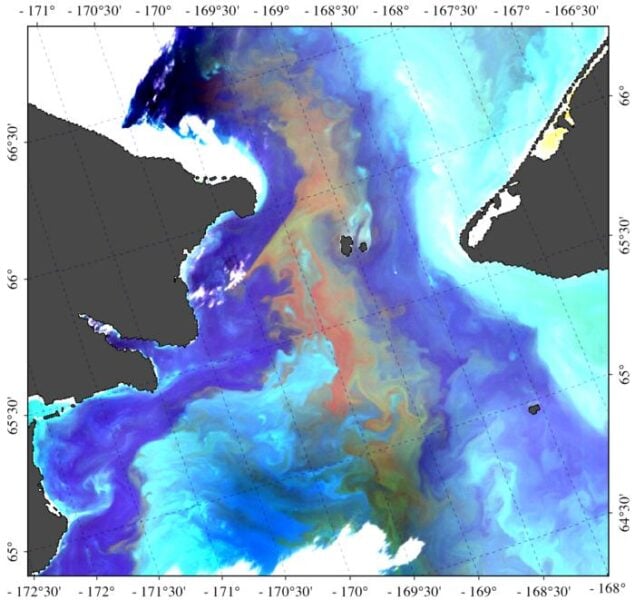Real-Time Warnings Save Alaskan Communities
A massive harmful algal bloom (HAB) detected in the Bering Strait region of western Alaska during the summer of 2022 has set new records and raised alarms about the changing Arctic ecosystem. The bloom, caused by the single-celled organism Alexandrium catenella, stretched over 370 miles and posed unprecedented risks to human and ecosystem health in the region.
Researchers from the Woods Hole Oceanographic Institution (WHOI) and partners documented this event, which they believe to be the largest HAB ever recorded in polar waters. The bloom’s high cell density, vast size, and potent toxicity created a perfect storm of danger for local communities relying on marine resources.
Evie Fachon, lead author of the study published in Limnology and Oceanography Letters, stated: “A goal of this study is to bring more attention to some of the serious issues this region is facing, knowing that as climate changes and the Arctic continues to warm, it’s more likely that we are going to see blooms like this occurring in polar waters. We are hopeful that this research can motivate more robust testing and monitoring.”
Record-Breaking Bloom Raises Concerns
The Alexandrium bloom reached concentrations exceeding 174,000 cells per liter – far beyond the 1,000 cells per liter considered dangerous. This organism produces neurotoxins called paralytic shellfish toxins (PSTs), which can accumulate in marine life and cause illness or death in animals and humans who consume contaminated seafood.
The researchers noted that warming Arctic waters are creating more favorable conditions for such blooms. “As continued warming shifts the Pacific Arctic towards more favorable conditions for A. catenella blooms, comprehensive monitoring and response resources will be essential in mitigating the impacts of future bloom events,” the article states.
Real-Time Detection and Rapid Response
The research cruise utilized an Imaging FlowCytobot (IFCB), a robotic microscope that enabled real-time detection of the bloom. This technology proved crucial in alerting local communities to the danger.
Gay Sheffield, the Marine Advisory Program Agent for Alaska Sea Grant, described the rapid response: “Within 24 hours of assisting with the first regional advisory, the tribally owned Norton Sound Health Corporation (NSHC) had its community-based health clinics on alert for symptoms of PSP, a novel human health risk to the Bering Strait region.”
The researchers collaborated with tribal and state governments to distribute risk advisories quickly. These efforts “mobilized a rapid and unprecedented regional response in an area with little experience of HABs, much less one of this magnitude,” according to the study.
Don Anderson, a senior scientist at WHOI, emphasized the importance of this technology: “Science has advanced to allow us to obtain this real-time offshore HAB information, and to show how important it is to society. We demonstrated how this sophisticated instrument, the IFCB, provides critical information from the ship, can be the centerpiece of a regional observing system, even in very remote and underserved – in terms of accessibility, power, and internet – areas.”
This event highlights the growing challenges faced by Arctic communities as climate change alters their environment. It also demonstrates the power of combining advanced technology with local knowledge and rapid communication to protect vulnerable populations.
As Sheffield noted, “With the climate continuing to warm, we will have to adapt to this new problem, and we are at the beginning phase of that.” The successful detection and response to this bloom provide a model for future efforts to monitor and mitigate the impacts of harmful algal blooms in the rapidly changing Arctic region.


